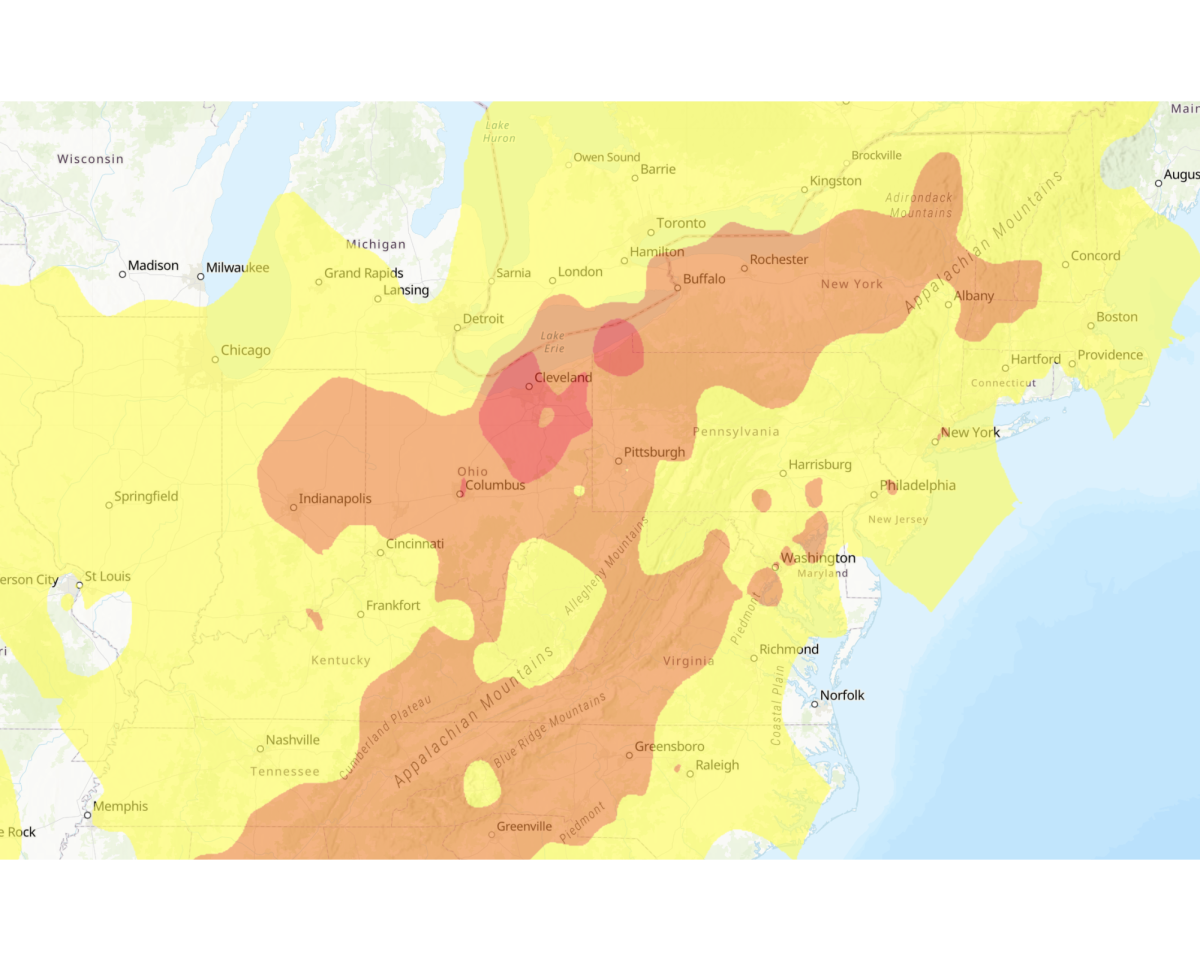The recent Canadian wildfires have brought waves of smoke across Oxford and much of the United States.
According to Stacy Porter, assistant professor in environmental science at Wittenberg University, western Canada sees its wildfire season in July and August. This year, however, the fires started blazing in June and have spanned across much more of Canada than ever before.
And more than ever before, the smoke has been visible here in Oxford: limiting visibility with a smoky haze; putting school administrators and coaches on alert and canceling some outdoor events.
“I’m so thankful for the movie ‘Everything Everywhere All At Once,’” Porter said. “That’s the perfect description of climate change right now.”
She said the fires are encompassing a total area roughly the size of the state of Ohio and have left lingering clouds of smoke that have been visible during spikes in the air quality index.
According to Porter, wildfires are a natural process that eliminates unnecessary growth. However, fires of the magnitude now in Canada pose a larger threat than the standard yearly wildfires. Canadian wildfire management has been unable to adapt to the increased size of its annual fires due to climate change.

Porter said stagnant weather with long stretches of heat and no rain causes the smoke to linger. Carbon in the atmosphere is largely responsible for “blocking” weather patterns that shifted the smoke’s traditional path so as to make its way over Ohio; normally, the smoke would head west.
“Typically, in those areas, we have westerly winds,” Porter said. “There is evidence to suggest that those blocking patterns are becoming more frequent because of the [global] warming we are seeing.”
In Oxford, the air quality index (AQI) has reached “red” levels, categorized as unhealthy for outdoor activities. Other areas spanning much of the United States have seen even higher levels.
According to Porter, the best way to counteract future AQI spikes is to contact your representatives and work to fight climate change.
“I think it’s a wake-up call to show that [climate change] is here,” she said. “It’s now.”
Athletic trainers at the Talawanda School District, which hosts many outdoor activities and sports over the summer, have had to monitor AQI to ensure participant safety, said Jake Richardson, athletic director at the district.
Holli Hansel, director of communications and public engagement at Talawanda, wrote in an email that she does not anticipate any problems with air quality once the school year is underway.
Talawanda has “procedures in place should a health event occur,” she wrote.
Air pollution spikes have disrupted some locals’ lives. BikeWise Oxford was forced to cancel one of its weekly local rides earlier this summer. The owner of the bike shop, Doug Hamilton, said he monitors the AQI every day.
“If it’s in the orange range, we don’t have a ride,” he said.
Hamilton rides his bike from College Corner to his store in Oxford every day. But recently, the air quality concerns have made that more difficult.
“Being someone who is pushing 60 and has had a history of heart disease, why risk?” Hamilton said.








